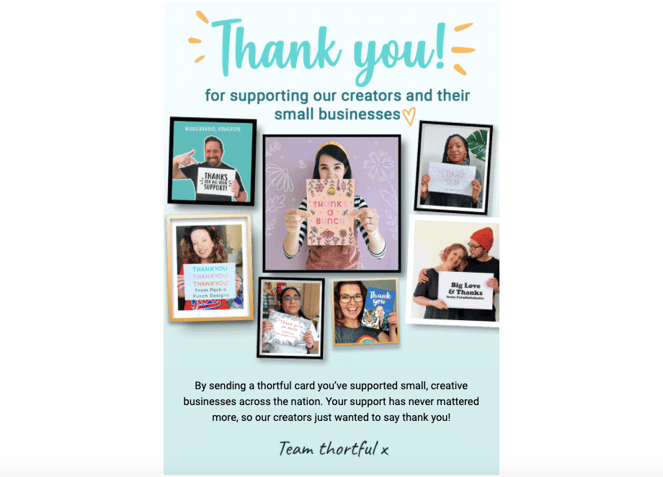8 Effective Customer Engagement Strategies with Real Brand Examples

Customer engagement strategies aren’t just fluffy marketing terms—they're proven methods to grow businesses and increase long-term revenue. Engaging your customers can boost your profit margins, reduce churn rates, and increase customer revenue by an average of 23%.
During a cost of living crisis, customer engagement strategies are even more crucial to business success. Consumers are spending carefully and scrutinising the brands they shop with.
Marketing budgets are smaller. Companies are under pressure to keep new customers acquired during tough times. But don't worry, this page will help you build an awesome strategy for customer engagement in 2024 and beyond.
8 Proven Customer Engagement Strategies
To remain relevant, your brand must understand and adapt to shoppers' changing needs and desires. Even with reduced marketing budgets and teams, it’s essential to build trust through good customer experiences and high engagement.
Here's how you can achieve this with eight proven customer engagement strategies:
1. Unite digital and physical experiences: Marks & Spencer
This year, get phygital. Many brands are combining the physical with digital in order to create seamless customer experiences.
For example, Marks & Spencer's released an app that uses AR (augmented reality) to create an on-screen path for customers to find items on their shopping list and explore the store. See below.
A good starting point for bringing the two together is by showing consistent, personalised content across touchpoints. A customer is far more likely to engage with an offer they see multiple times, particularly if at touchpoints of delight.
A good starting point is delivering consistent, personalised content across touchpoints. Imagine a customer who receives a message encouraging them to buy again within two weeks for a complimentary gift. This message is reiterated through email and in a physical insert upon delivery, increasing the likelihood of repeat purchases.
Customers see countless messages online every day, but rarely do they see the same message multiple times in both digital and physical form.
A personalised in-pack insert improves the unboxing experience and increases the likelihood of your customers taking desired actions.

M&S uses AR to enable customers to 'virtually' explore their stores via an app from home
2. User-generated content: Apple
Social media is powerful but saturated. User-generated content (UGC) is a simple yet effective customer engagement strategy that cuts through the noise and reaches your target audience.
If you sell everyday products like clothing or furniture, it’s likely your products are already in thousands of posts shared online. The trick is to make sure customers tag you in these posts and use your chosen hashtag. You can encourage this by using incentives, such as competition entry or the chance to feature on your website.
Not only will this engage your customers sharing online, but it’ll also build awareness of your brand and support new customer acquisition. UGC increases conversions by 161% when included on ecommerce product pages.
Apple mastered this with their #ShotOniPhone campaign. Launched in 2022 to rebuild trust in their camera quality, Apple invited users to share their best photos taken with an iPhone. The response was phenomenal—with over 29 million tags, the campaign highlights customer satisfaction and the camera's capabilities.
Better yet, user-generated content offers an alternative to traditional advertising at a time when you’ve likely had to postpone or cancel photoshoots. Sharing images of real people using your products in their everyday lives offers a powerful alternative to professional models and slick photography.
You may even find it yields better returns – and it doesn’t cost a penny. However, make sure your UGC doesn't feel spammy or salesly, otherwise people will lose trust.

Apple encourages customers to show off their iPhone photos with a branded hashtag to build engagement
3. Newsletter subscriptions: Buffer
Email CRM is vital in your marketing activity, but does it play a significant role in your customer retention strategy? Check out Buffer's engaging example below — it's concise with navigable sections. Perfect.
Also, you should connect email efforts with onsite touchpoints to encourage repeat visits. For example, invite customers to subscribe to your newsletter after placing an order — once subscribed, engage them with regular updates that resonate and motivate repeat purchases.
Track metrics to understand how newsletter subscribers behave compared to other customers. Personalised emails based on customer data (like job title or location) can significantly boost engagement and retention.
.png?width=331&height=580&name=rsz_screenshot_2024-10-02_at_114223%20(1).png)
Buffer engages readers with fun, concise and easily-navigable newsletters
4. A human touch: Thortful
As the trend to #supportsmallbusiness shows, people no longer want to buy from faceless entities. They want to know their money is going into the pockets of real people with purpose. 64% of consumers feel companies have lost the human touch of customer experience.
Restore this element and stand out from competitors by showing the real people behind your brand. Tell their stories, from your founder to your warehouse managers and delivery drivers. Show consumers why your brand exists and how you can make their lives better.
Greeting card company Thortful, for example, reminds customers that their purchase means that ‘someone, somewhere does a little happy dance!’. It builds on this with photos of its card creators, showing the real people behind its products.
Thortful shows the real people behind its products
5. Meaningful feedback and NPS surveys: Masterclass
83% of customers feel more loyal to brands that respond to feedback and resolve their complaints, making it one of the best customer engagement strategies.
Asking for customer feedback not only means you can keep a finger of the pulse of how your customers are feeling and improve your products and services, it also makes them feel heard.
In fact, customers who give negative feedback to brands that act on it are more likely to return and order again than those who give no feedback at all. What are your customers thinking, then? NPS is a straightforward way to understand your customer sentiment throughout the buying cycle.
Experiment with asking different segments for NPS feedback, then show messaging based on their response (such as incentivising promoters to refer friends).
For example, Masterclass encourages more NPS responses by using engaging terms like 'someone like you' rather than generic terms like 'friends and family'.

Masterclass uses engaging terms like 'someone like you' to make the customer feel special
6. Adapt to consumer behaviour: B&Q
The cost of living crisis underscores the need for agility and responsiveness to changing consumer behaviors. For instance, many retailers are now focusing on competitive pricing and value-added services.
Supermarkets like Aldi and Lidl have increased their market share by emphasising affordability and value without compromising on quality. On the other hand, John Lewis launched a 'Value' range offering low-priced essentials, helping them retain customers who might otherwise switch to discount retailers.
Adaptation can also be in messaging. During the cost of living crisis, brands are emphasising empathy and support. For instance, B&Q updated its marketing to focus on cost-effective DIY solutions, promoting its B&Q Club that offers discounts on many products. This positions the brand as a helpful ally in times of financial strain.
.png?width=603&height=541&name=rsz_1screenshot_2024-10-02_at_115752%20(1).png) B&Q tapped into the cost-conscious consumer mindset by offering discounts via the B&Q Club
B&Q tapped into the cost-conscious consumer mindset by offering discounts via the B&Q Club
7. Build a brand community: Huel
Being part of a community taps into a deep human instinct to belong. 40% of consumers spend more when part of a brand community, rising to 58% among millennials.
But building a brand community isn’t easy. It requires emotionally engaging your customers and offering value beyond your products. This starts with a meaningful mission: a purpose that sets your brand apart and inspires your customers.
For example, Huel’s is to make minimal impact on animals and the environment, while building a loyal community of fans known as 'Hueligans'. See below!
Once you’ve nailed that down, give your team the tools to provide brilliant experiences that instil this purpose in everything you do. Layer this with genuinely useful content: engaging social media posts, informative blogs, emails worth reading. And interact with your customers every step of the way.
Respond on social media, create forums, host events. Show your customers that they make your brand what it is. Then measure the impact of this army of brand ambassadors on your overall revenue.
How much do they spend compared to your average customer? How often do they return? How many new customers do they introduce? Elevate your community from a nice-to-have marketing initiative to a key revenue driver.
.png?width=800&height=226&name=rsz_screenshot_2024-10-02_at_120657%20(1).png)
Huel has built a community of 'Hueligans' to make it easier for customers to engage with each other
8. Social responsibility: Ben & Jerry's
People want to know who they’re buying from — the pressure is on for brands to be honest and transparent. Those that fall short of their values are called out and face the consequences. Boohoo’s shares fell by 40% after it was discovered to be paying workers as little as £3.50 per hour.
Ben & Jerry's is known for its stance on global issues, helping to engage customers in a positive way. Check out their about page below. Also, online retailer Gymshark spent five months living out its vision to be ‘respectful to others’ with a temporary rebranding to 'Homeshark' rather than simply change its name, get publicity then carry on as normal, it’s built on this with on-brand messages that conversationally – yet powerfully – promote doing the right thing.
 Ben and Jerry's takes a stand on issues like climate justice, LGBTQ+ rights and refugee rights
Ben and Jerry's takes a stand on issues like climate justice, LGBTQ+ rights and refugee rights
Roundup: Customer engagement strategies for long-term results
In the current environment, many retailers are discounting to drive sales and short-term profit. But this has dangerous implications long-term.
Discounts do not build meaningful relationships — they encourage customers to shop around for the best deal, trapping brands in an expensive cycle.
Instead of relying on discounts, build a cohesive customer engagement strategy that combines various customer engagement tactics and continuously measures their effectiveness.
Combine your tools and platforms – across marketing, logistics, ecommerce and every other area of your business – to thoroughly understand your customers and how to engage them throughout the lifecycle.
Use data as the foundation for your customer engagement strategy, and combine it with creative, problem-solving marketing strategies to foster meaningful relationships. Good luck!

Sophia King
Read more >
Never miss another update
Subscribe to our blog and get monthly emails packed full of the latest marketing trends and tips








